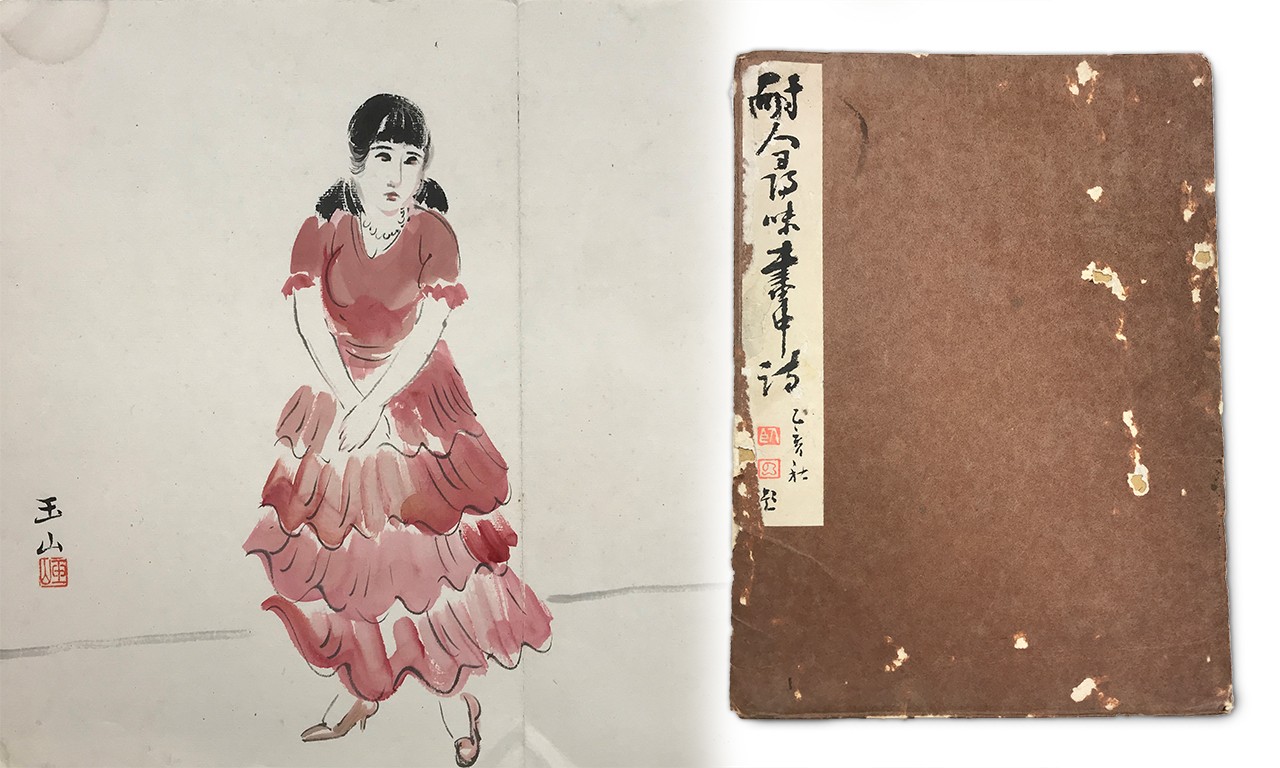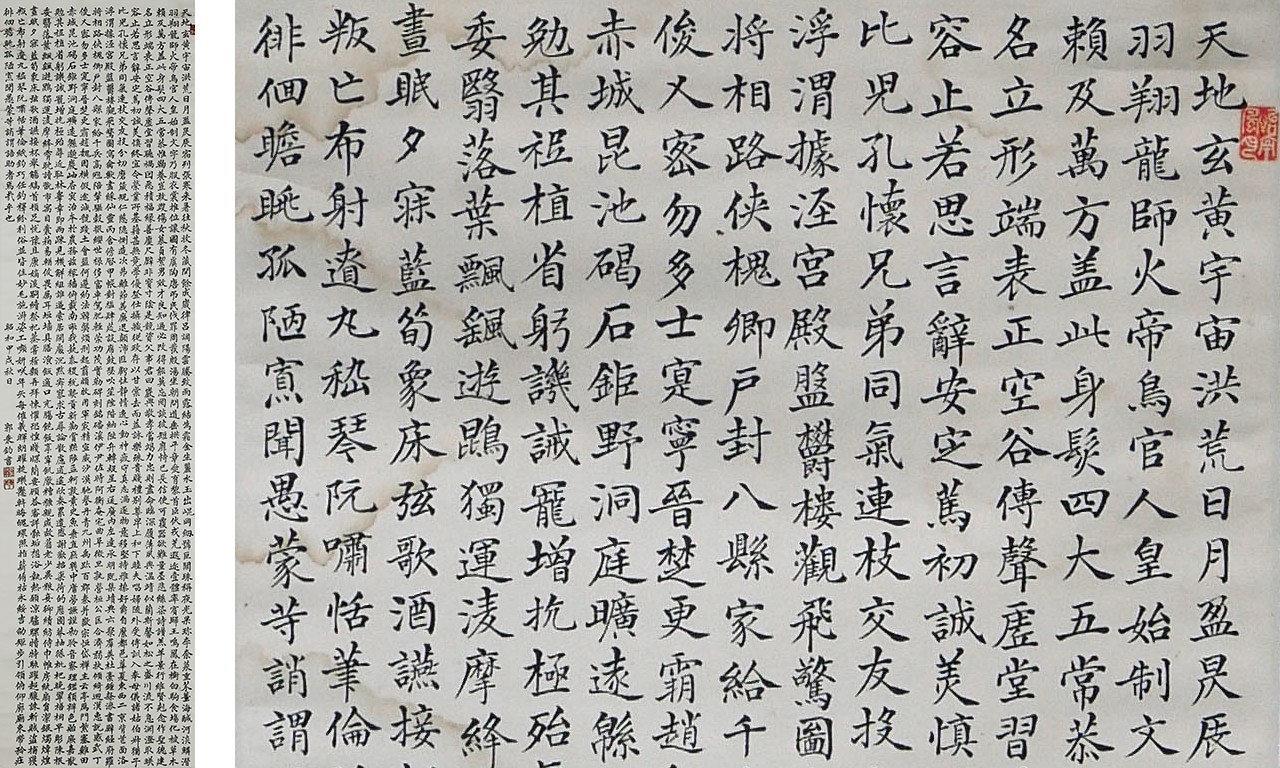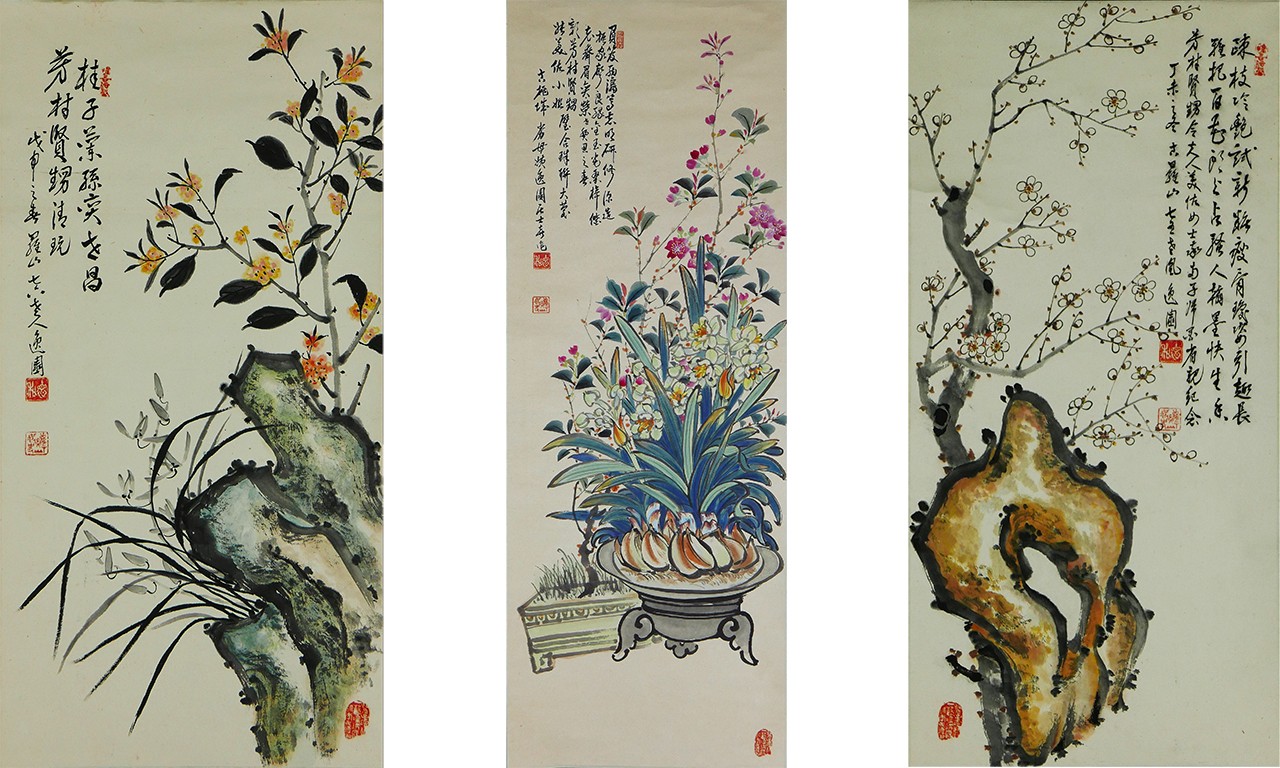2002 North Main Street
Santa Ana, California 92706
TEL: 714.567.3600
Song Swan Song: Three Taiwanese Scroll Painters
 |
| Scroll Paintings, c. 1930-1968 Lin Yu-shan (Taiwanese, 1907-2004) and Chang Lee Tekhoe (Taiwanese, 1893-1972); Taiwan Ink on paper 2020.2.1,.3-.5 Gift of Aloysius F. Kuo |
Good Things Come in Threes
Aside from clues in their subject matter, many paintings do not immediately bely their geographical origin. Back in February of this year the Bowers Museum received a generous donation of traditional ink paintings and calligraphies from the collections of Dr. Aloysius Kuo. One look at the paintings in this post and one might assume that they originated from China. Stylistically this is the case, however what the content of these paintings does not indicate is that their painters were born instead on the island of Taiwan and studied art both there and in Japan rather than in China. What these images do not tell, their provenance does: a story of an artist and a family of painters in Taiwan that he befriended, and the works they created during a period of great political change.
 |
| Book of Paintings (and detail), late 1920s Lin Yu-shan (Taiwanese, 1907-2004); Taiwan Ink on paper; 12 × 8 1/2 × 1 in. 2020.2.2 Gift of Aloysius F. Kuo |
Lin Yu-shan
The story behind this blog post begins in Kagi (now Chiayi) City, a town in the southwest plains of Taiwan in 1907, approximately 12 years into Imperial Japan’s occupation of Taiwan (1895-1945). Lin Yinggui—who would later go by the name Lin Yu-shan—was born to a family of art framers and developed an interest in painting at a young age, studying under both Japanese and Taiwanese artists. He first trained in gouache and eventually travelled to Japan to study at the short-lived Kawabata Painting School. However, his two main focuses there were Chinese literati painting and poetry which shifted his painting away from Western styles. After completing his studies in 1929 he returned to Taiwan where he continued to exhibit, settling in his native Kagi City. He continued to paint there until shortly after the war, when he was offered a teaching position at the Art Department of National Taiwan Normal University.
 |
| Detail of Untitled Scroll Painting, c. 1930 Lin Yu-shan (Taiwanese, 1907-2004); Taiwan Ink on paper; 74 × 20 1/2 × 1 in. 2020.2.1 Gift of Aloysius F. Kuo |
On a Roll
Following retrocession, he began painting in a Song dynasty Chinese style in earnest. He is best known for his watercolor and ink wash landscapes and portraits of animals. Lin Yu-shan was a firm believer in close observations of nature and fused human emotion with his subject matters by painting outdoors. His technique involved an array of tools: various brushes, dishes, hide glue, ivory knives and more. His use of different brush strokes and textures give a cohesive sense of movements in his compositions, from the angle of a bird’s gaze to the direction of the wind. His work accurately captures the expressions of animals because of his extensive studies en plein air. Small details such as the pupils of a tiger and the feathers of a bird’s plumage indicate anatomically correct impressions, while his unique texture strokes create a full story within a single painting. He has even been credited as one of the many influencers of his style’s renaissance in China. Interestingly, in the late 1920s he received an award for a now-lost Chinese-style painting titled Water Buffalo and Southern Gate. The Bowers Museum’s painting by Master Lin appears to depict a similar subject matter.
 |
| Calligraphy Scroll (and detail), 1926-1945 Kuo Ping-chun (Taiwanese, 1900-1970); Taiwan Ink on paper; 81 5/8 × 20 5/8 × 1 1/8 in. 2020.2.6 Gift of Aloysius F. Kuo |
Kuo Ping-chun
The father of the donor, Kuo Ping-chun, was a physician working in a suburb of Kagi City in the early 20th century when a young Lin Yu-shan came to him for help. Dr. Kuo cured Lin Yu-shan, and in payment received his first painting from the artist. The two became close friends through the years with Dr. Kuo regularly commissioning paintings from Lin Yu-shan even after he became a master painter. Kuo Ping was also a hobby painter and briefly studied under Master Lin. The book of paintings by Lin was put together for Dr. Kuo as a textbook of sorts, with each of the paintings within representing a different study of pastoral, traditionally Chinese paintings. Kuo’s own work in this post is a calligraphy painting he made to mark meeting his grandchildren.
 |
| Scroll Paintings, 1955-1968 Chang Lee Tekhoe (Taiwanese, 1893-1972); Taiwan Ink on paper 2020.2.3-.5 Gift of Aloysius F. Kuo |
Chang Lee Tekhoe
The donor’s father was not the only one in the family to take up painting. His aunt, Chang Lee Tekhoe, also studied Chinese-style painting with Master Lin, becoming the more accomplished painter between her and her brother. Three of the scroll paintings in this post were painted by her, all characteristic pieces given that she was known for her contemporary Chinese floral, landscape, and animal paintings, as well as her calligraphy. She received numerous top awards at the Annual Arts Exhibition during the 1930s and the early 1940s. Because of her contribution to the arts, Chang Lee Tekhoe became a Committee Member of the Sino-Japanese Culture Exchange Association and resided in Japan until her death in 1972.
Text and images may be under copyright. Please contact Collection Department for permission to use. References are available on request. Information subject to change upon further research.

Comments 1
The paintings and calligraphy scroll are stunning! I hope one or all will be included in the Ancient Arts of China gallery after it is re-installed. They are wonderful artistic additions to complement the Landscape Painting that currently hangs behind the Scholar's Desk. I enjoyed reading the commentary - it is well-written and engaging. I learn so much from the Bowers Blog. Thank you for your continued fine work.